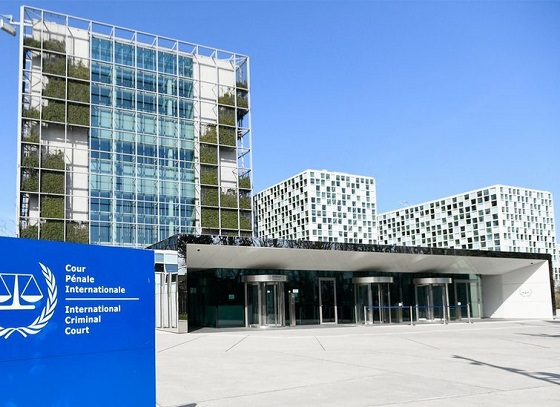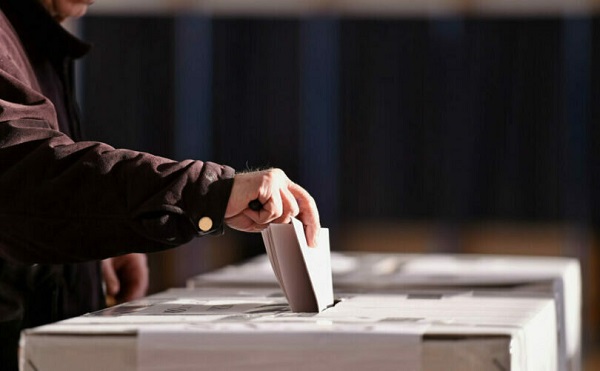Frontier Centre for Public Policy
False Claims, Real Consequences: The ICC Referrals That Damaged Canada’s Reputation

From the Frontier Centre for Public Policy
By Nina Green
The University of Manitoba has not provided the name of a single Indian residential school student who went missing and whose parents did not know at the time what had happened to their child. Not one.
Why has Canada twice been referred to the International Criminal Court on the basis of false claims about Indian residential schools?
The answer is simple.
The ultimate cause is the University of Manitoba’s National Student Memorial which falsely claims that it is a list of students who died on the premises of Indian residential schools and students who went missing from Indian residential schools. The University of Manitoba site tells users to:
Click on a region below to see a list of residential schools. Each residential school page contains a list of students who died or went missing at that school.
Those claims by the University of Manitoba are not true.
Firstly, the majority of the 4139 students currently on the University of Manitoba’s Student Memorial Register did not die on the premises of an Indian residential school. Most died elsewhere, as established by the Truth and Reconciliation Commission report entitled Missing Children and Unmarked Burials, which is in Table 4. Location of residential school deaths, 1867–2000 on page 21 states that only 423 named students died on the premises of an Indian residential school over the course of 133 years, an average of 3 students a year.
Thus, the majority of students did not die on the premises of Indian residential schools. They died elsewhere – in public hospitals or of illness or accidents on their home reserves, accidents which included house fires, drownings, gunshot wounds, vehicle accidents, falling trees, being hit by trains, and other accidental deaths, as established in hundreds of provincial death certificates.
Secondly, none of the students on the University of Manitoba’s lists went missing from an Indian residential school. To date, the University of Manitoba has not provided the name of a single Indian residential school student who went missing and whose parents did not know at the time what had happened to their child. Not one. And far from being ‘missing’, in fact hundreds of provincial death certificates establish that the students were buried on their home reserves by their families and communities.
Based on the University of Manitoba’s misleading lists, the media and the federal government uncritically accepted the false claim by the Kamloops Band on 27 May 2021 that the Band had discovered ‘the remains of 215 children’. After three years, the Band downgraded that false claim on 18 May 2024 to the claim that it had merely discovered ‘215 anomalies’, which could be anything, and are almost certainly the remains of the 2000 linear feet of trenches of a septic field installed in 1924 to dispose of the school’s sewage.
The first referral to the International Criminal Court by a group of 22 lawyers
Only a few days after the Kamloops Band made its false claim, on 3 June 2021 a group of 22 lawyers sent a 14-page complaint to the ICC requesting the Prosecutor to initiate an investigation of a ‘mass grave’ of Indian residential school students which had been discovered at Kamloops. The claim by the 22 lawyers that a ‘mass grave’ had been discovered at Kamloops was, of course, false.
The International Criminal Court quickly declined jurisdiction in November 2021, and on 13 September 2022 Dr Chile Eboe-Osuji, former President and Judge of the International Criminal Court, informed Special Interlocutor Kimberly Murray and those present at her National Gathering in Edmonton of the reasons for doing so. As reported by Chief Derek Nepinak, Dr Eboe-Osuji stated unequivocally that:
There is no pathway to the International Criminal Court for the situation of the historical Indian residential school system in Canada.
Dr Eboe-Osuji’s presentation has never been made available on the Special Interlocutor’s website, and requests to both Kimberly Murray and Dr Eboe-Osuji for a copy of his presentation have gone unanswered.
The second referral to the International Criminal Court by Special Interlocutor Kimberly Murray
Undeterred by the ICC’s refusal to accept jurisdiction and the reasons offered by Dr Eboe-Osuji in his presentation to her 13 September 2022 National Gathering, Kimberly Murray pursued the issue based on the University of Manitoba’s lists falsely claiming that all the students on its lists died on the premises of specific Indian residential schools or went missing from those schools.
On 29 October 2024, Kimberly Murray delivered her final report to Minister of Justice Arif Virani. However, as she told the Senate Standing Committee on Indigenous Peoples on 27 November 2024, Kimberly Murray also sent her report to the International Criminal Court, requesting Canada’s prosecution by the Court.
How the ICC will react to Kimberly Murray’s referral of Canada for prosecution is as yet unknown.
Damage to Canada’s international reputation
Canada’s reputation has been irreparably damaged by these two referrals to the International Criminal Court based on the University of Manitoba’s National Student Memorial which falsely claims that it is a list of students who died on the premises of specific residential schools or went missing from those specific schools.
It cannot be reiterated often enough:
(1) that most students whose names are on the University of Manitoba’s National Student Memorial did not die on the premises of a residential school;
(2) that most students on the University of Manitoba’s National Student Memorial died in public hospitals or of illness and accidents on their home reserves;
(3) that the University of Manitoba has never provided the name of a single student who ever went missing from an Indian residential school whose parents didn’t know what happened to their child; and
(4) that the majority of students whose names are on the University of Manitoba’s National Student Memorial were buried by their families and communities on their home reserves. Over time, their families and communities have forgotten them, and through neglect of the grave markers, no longer know where in their reserve cemeteries they are buried.
The University of Manitoba’s National Student Memorial has misled Canadians and has resulted in two referrals of Canada for prosecution by the International Criminal Court based on false claims about ‘mass graves’ and ‘missing’ and ‘disappeared’ Indian residential school students.
The federal government and the Catholic Church must demand that the University of Manitoba take down its false and misleading National Student Memorial.
Nina Green is an independent researcher who lives in British Columbia.
Frontier Centre for Public Policy
Tent Cities Were Rare Five Years Ago. Now They’re Everywhere

From the Frontier Centre for Public Policy
Canada’s homelessness crisis has intensified dramatically, with about 60,000 people homeless this Christmas and chronic homelessness becoming entrenched as shelters overflow and encampments spread. Policy failures in immigration, housing, monetary policy, shelters, harm reduction, and Indigenous governance have driven the crisis. Only reversing these policies can meaningfully address it.
Encampments that were meant to be temporary have become a permanent feature in our communities
As Canadians settle in for the holiday season, 60,000 people across this country will spend Christmas night in a tent, a doorway, or a shelter bed intended to be temporary. Some will have been there for months, perhaps years. The number has quadrupled in six years.
In October 2024, enumerators in 74 Canadian communities conducted the most comprehensive count of homelessness this country has attempted. They found 17,088 people sleeping without shelter on a single autumn night, and 4,982 of them living in encampments. The count excluded Quebec entirely. The real number is certainly higher.
In Ontario alone, homelessness increased 51 per cent between 2016 and 2024. Chronic homelessness has tripled. For the first time, more than half of all homelessness in that province is chronic. People are no longer moving through the system. They are becoming permanent fixtures within it.
Toronto’s homeless population more than doubled between April 2021 and October 2024, from 7,300 to 15,418. Tents now appear in places that were never seen a decade ago. The city has 9,594 people using its shelter system on any given night, yet 158 are turned away each evening because no beds are available.
Calgary recorded 436 homeless deaths in 2023, nearly double the previous year. The Ontario report projects that without significant policy changes, between 165,000 and 294,000 people could experience homelessness annually in that province alone by 2035.
The federal government announced in September 2024 that it would allocate $250 million over two years to address encampments. Ontario received $88 million for ten municipalities. The Association of Municipalities of Ontario calculated that ending chronic homelessness in their province would require $11 billion over ten years. The federal contribution represents less than one per cent of what is needed.
Yet the same federal government found $50 billion for automotive subsidies and battery plants. They borrow tonnes of money to help foreign car manufacturers with EVs, while tens of thousands are homeless. But money alone does not solve problems. Pouring billions into a bureaucratic system that has failed spectacularly without addressing the policies that created the crisis would be useless.
Five years ago, tent cities were virtually unknown in most Canadian communities. Recent policy choices fuelled it, and different choices can help unmake it.
Start with immigration policy. The federal government increased annual targets to over 500,000 without ensuring housing capacity existed. Between 2021 and 2024, refugees and asylum seekers experiencing chronic homelessness increased by 475 per cent. These are people invited to Canada under federal policy, then abandoned to municipal shelter systems already at capacity.
Then there is monetary policy. Pandemic spending drove inflation, which made housing unaffordable. Housing supply remains constrained by policy. Development charges, zoning restrictions, and approval processes spanning years prevent construction at the required scale. Municipal governments layer fees onto new developments, making projects uneconomical.
Shelter policy itself has become counterproductive. The average shelter stay increased from 39 days in 2015 to 56 days in 2022. There are no time limits, no requirements, no expectations. Meanwhile, restrictive rules around curfews, visitors, and pets drive 85 per cent of homeless people to avoid shelters entirely, preferring tents to institutional control.
The expansion of harm reduction programs has substituted enabling for treatment. Safe supply initiatives provide drugs to addicts without requiring participation in recovery programs. Sixty-one per cent cite substance use issues, yet the policy response is to make drug use safer rather than to make sobriety achievable. Treatment programs with accountability would serve dignity far better than an endless supply of free drugs.
Indigenous people account for 44.6 per cent of those experiencing chronic homelessness in Northern Ontario despite comprising less than three per cent of the general population. This overrepresentation is exacerbated by policies that fail to recognize Indigenous governance and self-determination as essential. Billions allocated to Indigenous communities are never scrutinized.
The question Canadians might ask this winter is whether charity can substitute for competent policy. The answer is empirically clear: it cannot. What is required before any meaningful solutions is a reversal of the policies that broke it.
Marco Navarro-Genie is vice-president of research at the Frontier Centre for Public Policy and co-author with Barry Cooper of Canada’s COVID: The Story of a Pandemic Moral Panic (2023).
Agriculture
The Climate Argument Against Livestock Doesn’t Add Up

From the Frontier Centre for Public Policy
Livestock contribute far less to emissions than activists claim, and eliminating them would weaken nutrition, resilience and food security
The war on livestock pushed by Net Zero ideologues is not environmental science; it’s a dangerous, misguided campaign that threatens global food security.
The priests of Net Zero 2050 have declared war on the cow, the pig and the chicken. From glass towers in London, Brussels and Ottawa, they argue that cutting animal protein, shrinking herds and pushing people toward lentils and lab-grown alternatives will save the climate from a steer’s burp.
This is not science. It is an urban belief that billions of people can be pushed toward a diet promoted by some policymakers who have never worked a field or heard a rooster at dawn. Eliminating or sharply reducing livestock would destabilize food systems and increase global hunger. In Canada, livestock account for about three per cent of total greenhouse gas emissions, according to Environment and Climate Change Canada.
Activists speak as if livestock suddenly appeared in the last century, belching fossil carbon into the air. In reality, the relationship between humans and the animals we raise is older than agriculture. It is part of how our species developed.
Two million years ago, early humans ate meat and marrow, mastered fire and developed larger brains. The expensive-tissue hypothesis, a theory that explains how early humans traded gut size for brain growth, is not ideology; it is basic anthropology. Animal fat and protein helped build the human brain and the societies that followed.
Domestication deepened that relationship. When humans raised cattle, sheep, pigs and chickens, we created a long partnership that shaped both species. Wolves became dogs. Aurochs, the wild ancestors of modern cattle, became domesticated animals. Junglefowl became chickens that could lay eggs reliably. These animals lived with us because it increased their chances of survival.
In return, they received protection, veterinary care and steady food during drought and winter. More than 70,000 Canadian farms raise cattle, hogs, poultry or sheep, supporting hundreds of thousands of jobs across the supply chain.
Livestock also protected people from climate extremes. When crops failed, grasslands still produced forage, and herds converted that into food. During the Little Ice Age, millions in Europe starved because grain crops collapsed. Pastoral communities, which lived from herding livestock rather than crops, survived because their herds could still graze. Removing livestock would offer little climate benefit, yet it would eliminate one of humanity’s most reliable protections against environmental shocks.
Today, a Maasai child in Kenya or northern Tanzania drinking milk from a cow grazing on dry land has a steadier food source than a vegan in a Berlin apartment relying on global shipping. Modern genetics and nutrition have pushed this relationship further. For the first time, the poorest billion people have access to complete protein and key nutrients such as iron, zinc, B12 and retinol, a form of vitamin A, that plants cannot supply without industrial processing or fortification. Canada also imports significant volumes of soy-based and other plant-protein products, making many urban vegan diets more dependent on long-distance supply chains than people assume. The war on livestock is not a war on carbon; it is a war on the most successful anti-poverty tool ever created.
And what about the animals? Remove humans tomorrow and most commercial chickens would die of exposure, merino sheep would overheat under their own wool and dairy cattle would suffer from untreated mastitis (a bacterial infection of the udder). These species are fully domesticated. Without us, they would disappear.
Net Zero 2050 is a climate target adopted by federal and provincial governments, but debates continue over whether it requires reducing livestock herds or simply improving farm practices. Net Zero advocates look at a pasture and see methane. Farmers see land producing food from nothing more than sunlight, rain and grass.
So the question is not technical. It is about how we see ourselves. Does the Net Zero vision treat humans as part of the natural world, or as a threat that must be contained by forcing diets and erasing long-standing food systems? Eliminating livestock sends the message that human presence itself is an environmental problem, not a participant in a functioning ecosystem.
The cow is not the enemy of the planet. Pasture is not a problem to fix. It is a solution our ancestors discovered long before anyone used the word “sustainable.” We abandon it at our peril and at theirs.
Dr. Joseph Fournier is a senior fellow at the Frontier Centre for Public Policy. An accomplished scientist and former energy executive, he holds graduate training in chemical physics and has written more than 100 articles on energy, environment and climate science.
-

 Agriculture1 day ago
Agriculture1 day agoEnd Supply Management—For the Sake of Canadian Consumers
-

 Digital ID22 hours ago
Digital ID22 hours agoCanadian government launches trial version of digital ID for certain licenses, permits
-

 Alberta21 hours ago
Alberta21 hours agoAlberta Next Panel calls to reform how Canada works
-

 Business19 hours ago
Business19 hours agoThe “Disruptor-in-Chief” places Canada in the crosshairs
-

 International16 hours ago
International16 hours agoGeorgia county admits illegally certifying 315k ballots in 2020 presidential election
-

 Artificial Intelligence20 hours ago
Artificial Intelligence20 hours agoUK Police Pilot AI System to Track “Suspicious” Driver Journeys
-

 Energy15 hours ago
Energy15 hours ago‘The electric story is over’
-

 International23 hours ago
International23 hours agoWorld-leading biochemist debunks evolutionary theory






